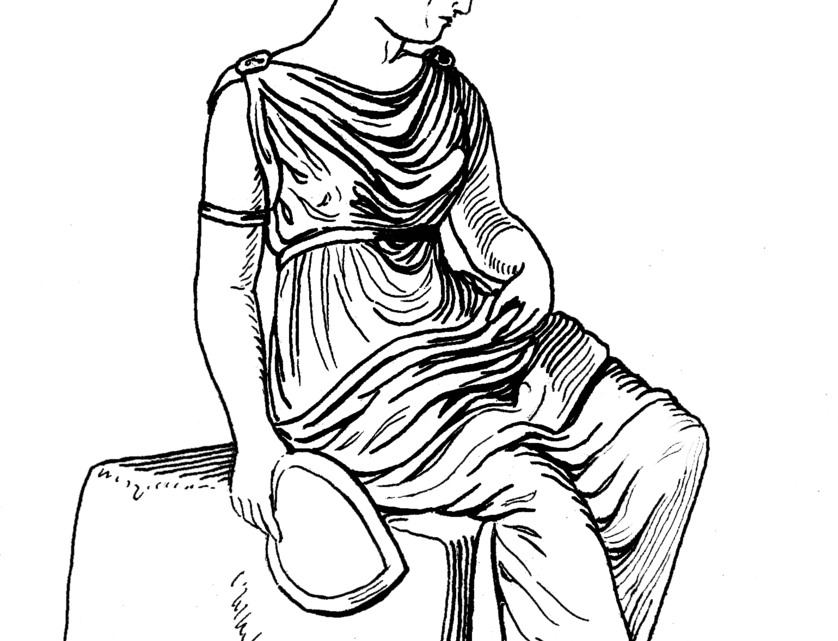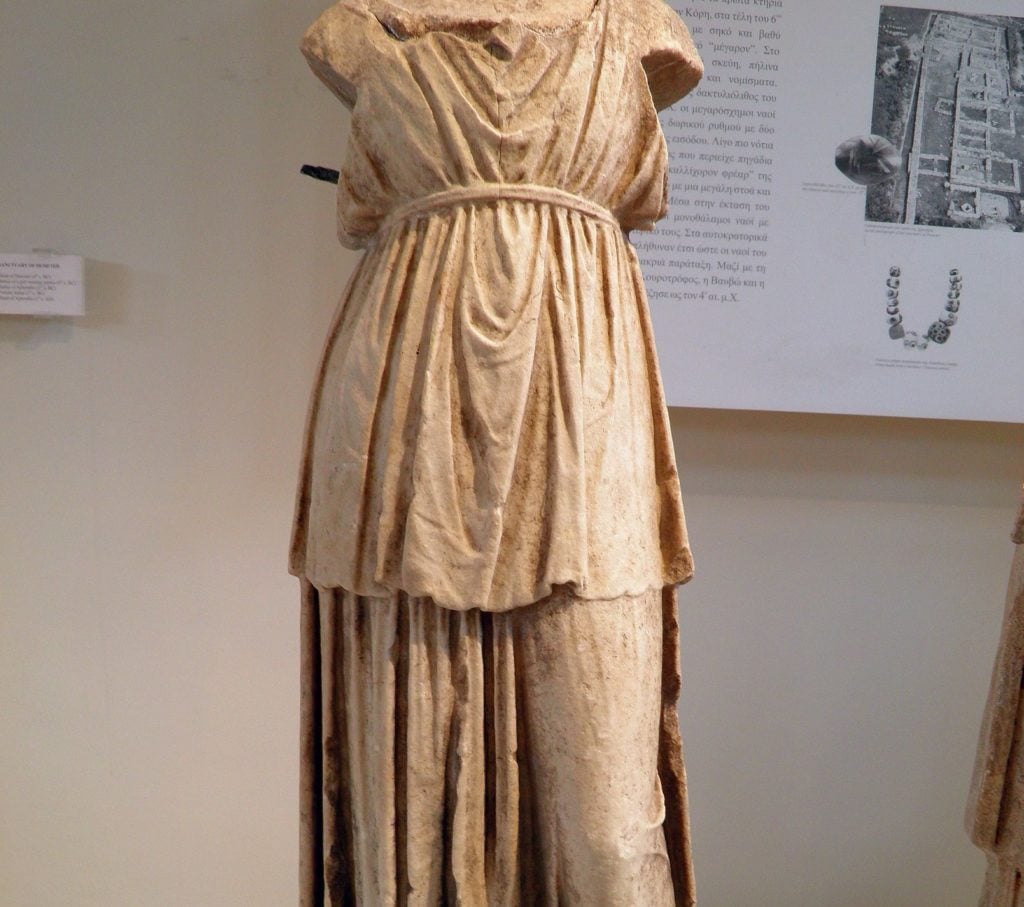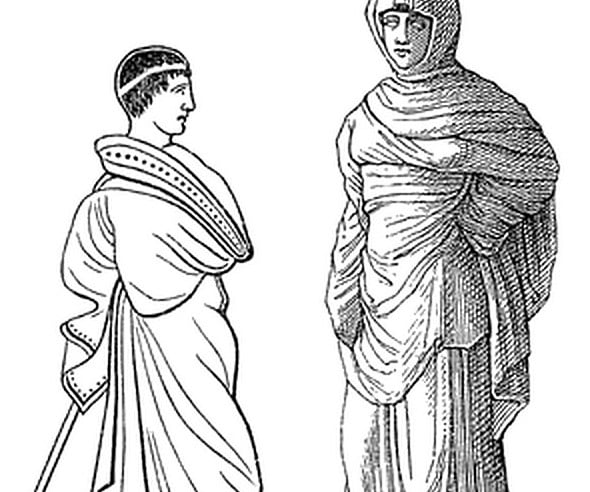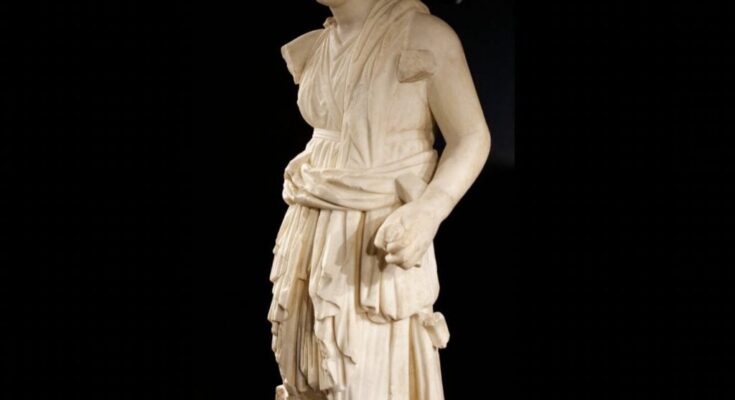Ancient Greek fashion provides a fascinating look into the everyday lives of Greeks from thousands of years ago. It also remains relevant today, with runways the world over paying tribute to the clothing styles favored by those who resided in ancient Athens and Sparta.
Looking into the clothing worn at any time in the past, you are bound to learn something about not only the values of the society that wore it but also how people were expected to live their daily lives in that culture.
The basics of Ancient Greek fashion
Speaking to Greek Reporter recently, Amanda Hallay, a fashion and cultural historian, outlined the basics of ancient Greek clothing styles.
According to Hallay, there were three basic styles of clothing that most people wore in the ancient world.

“The chiton, peplos, and himation. The chiton was a rectangular piece of fabric wrapped around the body to create a tube,” said Hallay, “as we would with a beach wrap today—and secured at each shoulder with a fibulae, or clasp.”

“Both men and women wore chitons, although men’s chitons were shorter than the full-length chitons worn by women,” Hallay said. According to Hallay, the peplos was worn only by women over the chiton and pulled up at the waist to create a sort of peplum effect which could also be created with the excess fabric of a chiton.

“The himation was sort of like a cloak; a long, rectangular piece of heavier fabric that was worn as an outer garment. The weather in Ancient Greece was quite a bit warmer than it is today, so there wasn’t a need for heavy layers or heavy textiles,” Hallay noted.
Simple perfection
Looking at images of ancient Greek clothing, it is obvious that Greeks gravitated towards a simple silhouette for most of their fashion. Hallay highlighted that the simplicity seen in these styles is one of the most distinct features of ancient Greek fashion in comparison to clothing styles favored by other civilizations. However, she was quick to point out that this may have been partly to do with function as well as fashion.
“Compared to later eras (or parallel eras in other regions), tailoring wasn’t a feature of clothing in Ancient Greece. In other words, seldom were fabrics cut, and sewing was practically non-existent. Instead, fabrics were wrapped around the body and secured by tying or with clips called fibulae,” Hallay explained.
This simplicity likely came as a relief for the women of ancient Greece, who, Hallay said, were expected to not only create textiles but also make clothing for their whole family.
It would have been a welcome respite from the myriad of chores women were expected to perform, and also set them apart from northern European women, who would have had to sew complicated clothing on top of performing other household duties.
Another aspect of most civilizations is social class and its expression through clothing and other physical indicators of wealth. The simplicity of ancient Greek clothing may not seem conducive to differentiation based on class, but it is likely that the upper classes still found ways to show off their comfortable lifestyles.
“Not in terms of clothing, but certainly, we believe that jewelry—and possibly even perfume—were used as indicators of wealth and status,” Hallay noted.
Furthermore, said Hallay, “the Greeks traded with other regions, and so we can probably imagine that exotic textiles might make their way into a fashionable woman’s wardrobe,” showing that where there’s a will, there’s a way when it comes to fashion!
Still relevant thousands of years later

Ancient Greek clothing is still so relevant today that one may be forgiven for not even noticing when the style has influenced modern designers. Such a large percentage of contemporary clothing takes inspiration from styles created thousands of years ago that the modern eye has become so used to seeing ancient Greek styles, they don’t even seem to register!
However, Hallay observed that “any time you see anything that’s draped, we can thank the Ancient Greeks. The Ancient Egyptians gave us pleats, but it was the Greeks who gave us the glorious and elegant draping that has been a feature of fashion throughout the 20th and 21st century. The other day, I was watching the ‘Halston’ docudrama on Netflix, and was reminded again just how much the ’70s owed to the Ancient Greeks.”
“Think about it,” Hallay urged me on, “we don’t see Medieval surcoats, Elizabethan ruffs, 17th Century panniers, or Victorian hoop skirts on red carpets very often, but every award season, we see beautiful and elegant gowns that pay direct homage to Ancient Greece. And of course, if we go back to The Minoans, we get the first idea of an hourglass silhouette, one which—thanks to the Kardashians—is now back in fashion as a body ideal.”
According to Hallay, this proves just how many modern styles we have ancient Greece to thank for. Dior made headlines with its “Cruise 2022” line, which took heavy inspiration from ancient Greek chitons, peplos, and other styles of dress from the period. The styles from that line were shown at a gala evening fashion show in Athens.
The creative director of Dior, Maria Grazia Chiuri, was vocal in her admiration of ancient Greek clothing styles, and even elected to hold the prolific fashion house’s catwalk at the Athens Panathenaic Stadium, incorporating her source of inspiration into the modern world of fashion today.



